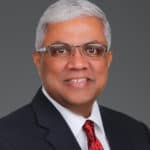The COVID-19 pandemic has grounded virtually almost all international trade and commerce. As companies scramble to adjust to this unprecedented event, pressure is mounting on FP&A teams to recalibrate their forecasts – not only through the end of 2020 but well into 2021.

Himashi Soriano, managing director for APAC at the Association for Financial Professionals (AFP), cited in a recent survey of 600 FP&A professionals across 20 industries, which revealed that 66% believe that the crisis will last for three quarters or more. And even then, the recovery will be slow.
Amid these dire forecasts, FutureCFO spoke with senior financial executives with a regional role across Asia-Pacific for a glimpse into the upheaval that the global pandemic has brought to their FP&A practice, and how they are helping senior leadership weather the crisis with the company intact.
Out of the ivory tower

Singapore-based Surya Balasubramanian, chief financial officer at Intelligence Wise, noted that COVID-19 has brought to the forefront difficult issues that FP&A organisations have to finally address. He pointed to three problem areas that will have to change in this new environment.
“Three things have been missing in FP&A teams and they are likely going to be factored in moving forward,” he said. First, the FP&A function has traditionally been held by an individual sitting behind a desk, crunching numbers. Balasubramanian recommends making the FP&A lead step out of the room and get exposed to the business. That way, when it is time to crunch numbers, the FP&A practitioner has an even better understanding of what they truly mean.
“Second, traditionally, the FP&A function is seen as an exclusive domain of finance people,” he said. “We need to bring in non-finance people into the FP&A domain and give them ownership of putting inputs into the FP&A model.”
Finally, the idea FP&A can be handled by one person or a very small group of people needs to be re-evaluated. FP&A should not be a bolt-on function in the finance department. “We need to build a team to introduce robustness into the FP&A function you are developing,” he elaborated.
Soriano agreed with the assessment that non-finance people bring their unique perspectives to the FP&A team so that the numbers align with the situation on the ground. "At AFP, we help finance to see beyond the numbers. We train FP&A professionals to be specially equipped to mitigate uncertainty and make the numbers work to determine holistic strategic planning, budgeting, and forecasting that ties into the goals of the business.," Soriano concluded.
Balasubramanian added that COVID-19 has presented FP&A with an opportunity receive more exposure and influence throughout the organization.
He stressed that this is the time for FP&A to serve as an important guidepost going forward, explaining to the business how the numbers are moving with changing scenarios. This will help assure other departments that numbers are reliable and trustworthy.
Stress-testing opportunity
FP&A professionals are accustomed to revisiting budgets and business forecasts under pressure. However, one area that is typically lacking in the FP&A practice is stress-testing. As a result, there have been occasions that projections have failed.
“That is not factored into the model. What is the probability of the business failing? If this business failure is 100% of this segment, what is the Plan B that must be triggered so that the organisation is fully prepared if the eventuality happens? Who should do what? That stress-testing factor is not built into FP&A. The devil is in the details,” Balasubramanian elaborated.
Stress-testing is a best practice common in financial services and is quite essential in an effective and robust FP&A function. FP&A can do this by stressing single variables in financial models to the extreme, or by creating scenarios of multiple stressors to understand when the companies becomes insolvent.
Finding the bright spots
At Thomson Reuters, the FP&A team has found itself churning out multiple scenarios and revised forecasts since COVID-19 hit its business. While these scenarios are being driven externally by investors who demand visibility from a public company, internally, Thomson Reuters uses them to find pockets of opportunities to redirect their investments and talents.

“We have only this amount of budget and this amount of capital, and now because of this fluid situation, we end up doing more dynamic and agile funding. Instead of doing it as an annual exercise, we end up doing it probably every couple of months, where we redirect some of our investments and serve our customers better,” said Sunil Golecha, CFO and vice president, Asia-Pacific and Emerging Markets for Thomson Reuters.
Golecha calls this exercise “agile reprioritisation,” in which investments are being redirected to markets – perhaps China or New Zealand – that show significant potential business to counter anticipated negative growth in other geographies.
New skillsets wanted
Like Balasubramanian, Golecha believes an effective FP&A team must include non-finance people who have a good grasp of the company’s business and how it works. He believes that technical, financial and accounting skills can be redirected to the shared services group to help in controllership, accounting and tax.
“I look out for three things: technology understanding, because we are seeing a lot of automation opportunities; mindset to learn the business, understanding the business in and out as much as they can; and analytical skills to come up with different scenarios and churn out numbers,” he said.
Golecha pointed out that analytical skills are the area most FP&A teams need to improve upon because not everyone has a leaning towards a “business-focused FP&A analysis.”
He added that many FP&A reports contain a lot of numbers and commentary that are already self-evident. He noted that a robot can be applied to read these numbers and provide technical commentary.
“What is needed is for someone to provide business-focused commentary – a skillset lacking in FP&A teams that are manned by people with an accounting background,” he opined.
He sees the FP&A professional as someone who is comfortable sitting with and talking to the business about the business. “They have a seat at the table, and they can contribute and learn. And they can be part of leadership in many ways for the business,” he added.
Use technology for validating scenarios faster
According to Golecha, COVID-19 has forced FP&A teams out of their comfort zones and forced them to do things differently, accelerating adoption of technology such as AI, which used to be a luxury but now is viewed as a necessity.
“We can’t go back to where we were before. Majority of our jobs will go away and many will radically transform in some way or the other. We need digital tools, AI capabilities and so on.
Because if you have big data or you deal with numerous scenarios or you have to run dynamic planning and budgeting every month, technology is the only thing that will solve the problem.
You need AI capabilities that can run those scenarios for you. If you have 50 scenarios, a person will take forever, whereas if you have an AI engine, that will spit out a lot more and then people can spend time to say these scenarios make sense because AI still will not be perfect,” he said.
Because of this, FP&A professionals will need to be more focused on validating which assumptions to use and which ones not to use, rather than spending time creating those assumptions and scenarios.
“COVID has changed the way we operate. I hope it accelerates the adoption of technologies and new ways of working – and a much more agile way of functioning as an organisation. We cannot go back to the old model. This is the time to reimagine. Resistance is not logical anymore,” he concluded.
Bridging the gap between numbers and operations
In a period of extreme market volatility, evolving regulation and an expanding array of compliance requirements, the business needs interpreters who can add value to the numbers that finance and operations churn out – value that management needs to make decisions.
"CFOs in Asia face the same challenge as their peers in other parts of the world – to build an FP&A team capable of bridging the gap between numbers and operations, which enable them to quickly identify the potential impact of various risks to the business, build multiple scenarios and come out with forecasts that are close to reality as possible," Soriano said.




